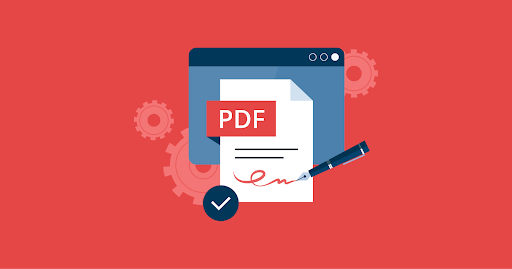As businesses increasingly rely on Portable Document Format (PDF) files for critical documentation and processes, having the proper PDF software capabilities is imperative. However, with the wide range of solutions available, determining the best value tailored to your company’s unique requirements takes thoughtful evaluation.
In this blog, we’ll provide some buying tips by assessing all the PDF tools that’ll help you invest in technology that strategically empowers your teams.
Tips for Buying PDF Tools Aligned to Your Business Needs
Buying the right PDF tools requires balancing functionality, budget, security, mobility and other key elements. Here are 6 tips for purchases that enhance workflows:
Consider functionality needed
The first step is detailing exactly how your business utilizes PDFs across departments through current workflows and volume to determine must-have capabilities. Common essential features include converting other file types like Word or Excel to standardized PDF documents as well as compiling and merging files.
Consider the needs around exporting PDF back into editable formats, annotation for feedback, electronic signatures to finalize forms or agreements, optical character recognition to transform scanned files into searchable text, securing sensitive docs, simplifying edits and more.
Compiling all Core functionality needed based on real-world usage avoids paying for unnecessary complex capabilities not relevant to current processes while allowing room for growth.
Determine size of team and number of licenses needed
One of the biggest cost factors is the number of licenses so accurately determining how many employees utilize PDF software is crucial. Evaluate if external partners or clients ever need access to factor into totals as well.
Some vendors charge per user license while more advanced solutions allow unlimited users to enable organization or enterprise-wide adoption. Also consider if tiered permission levels are beneficial for limiting access to sensitive financial data or legal documents.
Buying too few leaves teams frustrated by lack of access. Purchasing too many unused licenses wastes budget. Right-sizing aligns value to real needs.
Set budget and explore pricing options
PDF tools range from completely free options to subscriptions costing over $300 per user each month. Outline the maximum budget available for software capabilities after determining functionality and team scope requirements.
Remain open to solutions that may exceed initial budget if increased capabilities and advanced features like artificial intelligence deliver substantive value by automating more intensive manual workflows. Consider if current processes involve error-prone rekeying of data that intelligent data extraction tools could eliminate.
Compare monthly, annual and multi-year licensing options across vendors for best overall ROI based on genuinely needed functionality.
Look into security features and customer support
Since PDFs often contain a company’s most sensitive documents including legal contracts, financial statements, intellectual property and more, the paramount consideration is enterprise-grade security.
Investigate encryption protocols for data protection, both in transit and at rest. Granular user access permissions and activity logging enables tracking version histories and changes. Equally important is responsive technical support and customer service options like live chat, phone and support ticket systems in case any issues surface, ensuring continuous uninterrupted productivity.
Explore AI Technology
Advanced solutions are infusing artificial intelligence for unlocking automation to simplify laborious tasks. AI performs optical character recognition, tags content automatically and transforms scanned documents into searchable, editable files saving vast amounts of manual work.
One advanced AI-powered PDF tool to consider is PopAi’s intelligent reader capabilities. The software can quickly summarize long PDF documents for easier consumption. It also enables editing PDF text, images and links just like a Word doc.
For global teams, PopAi Pro automatically translates imported PDF files into over 100 languages through machine translation while retaining format and layout. The AI pdf reader simplifies working with critical documents through automation to save teams substantial time.
Factor in mobile access and integration capabilities
The right PDF solution should seamlessly integrate into existing company infrastructure like customer relationship management (CRM) platforms, cloud storage services and other productivity software.
Many also offer optimized mobile apps to facilitate remote access and editing on-the-go for location flexible use cases. Consider the current environment and determine must-have plug-ins or API compatibility to customize over time beyond out-of-box capabilities if needed.
Conclusion
Identifying the perfect PDF tools for business purposes requires balancing critical elements like functionality, team member licensing, budget parameters, robust security features, existing software ecosystem integration options and mobile flexibility.
Following these buying tips when evaluating solutions simplifies determining capabilities that genuinely resolve current workflow friction points without overspending on unnecessary features. Companies that invest thought and research into PDF software needs maximize long-term value through enhanced productivity.
